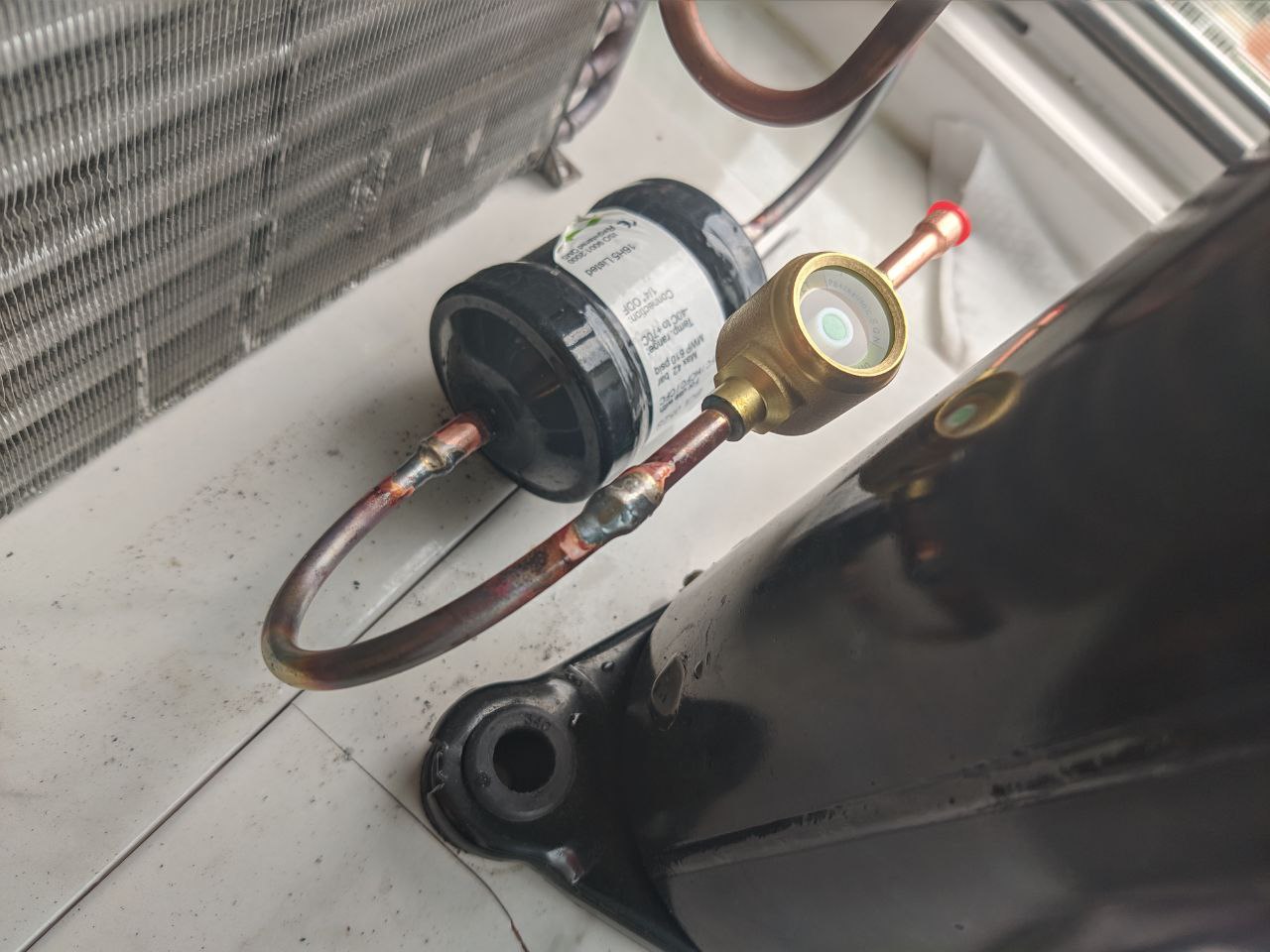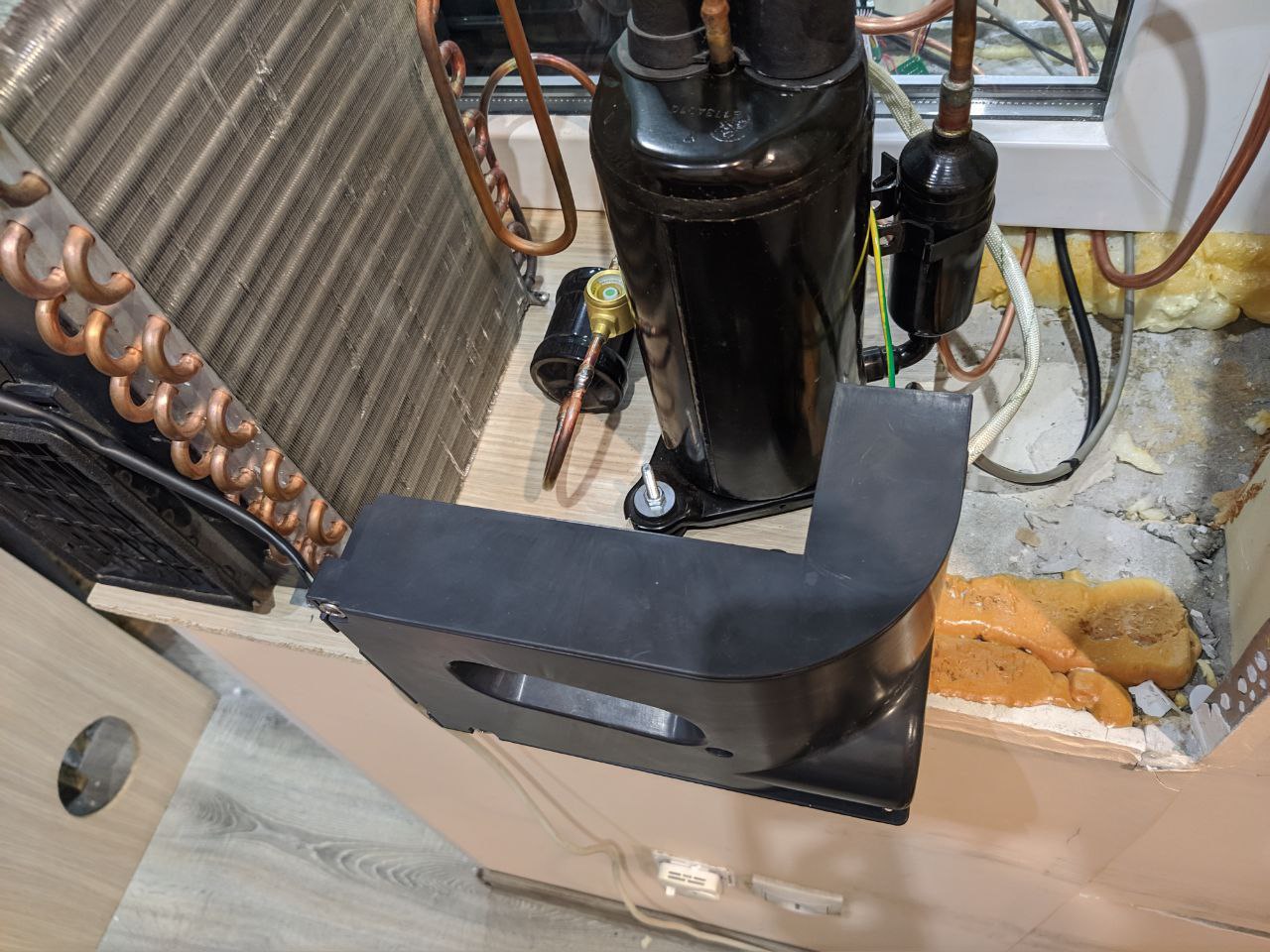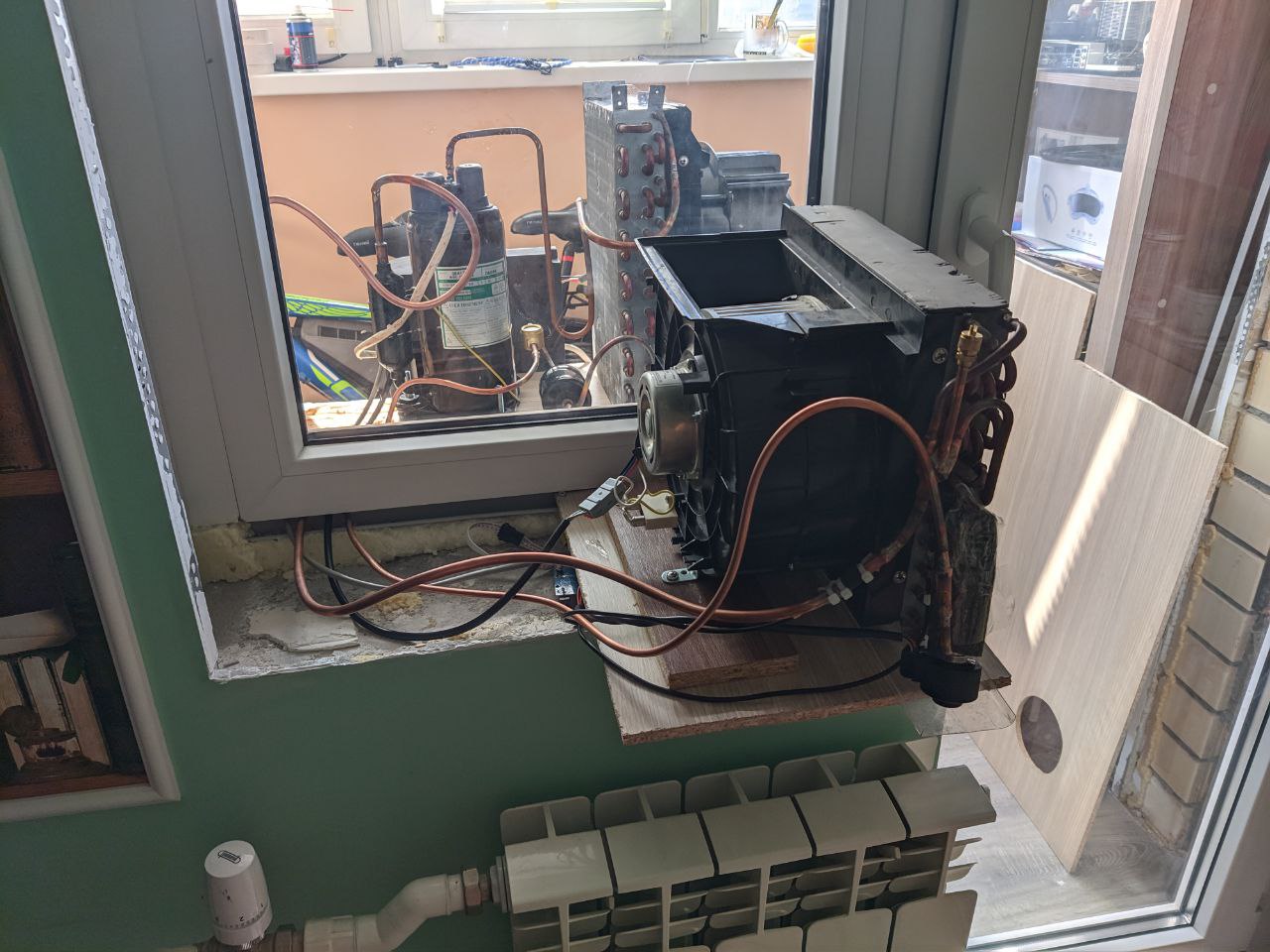How it all started
A few years ago I bought a portable air conditioner with the sole purpose of taking it apart and studying how it works. I also spent a bunch of money on tools: charging manifold, hoses, vacuum pump, brazing rods and a torch.
At the time I couldn't braze: I bought the brazing rods with slightly lower melting temperature, but an ordinary butane/propane torch was not hot enough to melt them fully.
I took that AC apart and separated the condenser and evaporator. It was an r410a AC with a capillary tube expansion valve, nothing fancy. Since I didn't want to release refrigerants with high GWP into the atmosphere and had no way of collecting them, I experimented with ordinary camping gas mixtures and r600a (isobutane). I also used ordinary soft solder instead of brazing. I bought an EEV and controlled it by hand with a magnet.
As you can see, I've cut a lot of corners. I didn't have a lot of money, so I had to get creative and get by with what I had at the time. But I was able to get an intuitive understanding and learn all the basics: how to charge a system, how to measure subooling and superheat, how an expansion valve works and what types of expansion valves exist.
Since the AC used R410a, it came with POE oil, which is nasty stuff. It absorbs moisture insanely well and turns acidic. I didn't want to mess with it, so I replaced the oil in the compressor. It's a rotary compressor with a pressurized enclosure and an outlet at the top. I had to use solvents to flush all the POE oil out and then a vacuum pump to get the solvent evaporated. Then I added the same amount of mineral oil through the same discharge port.
A long break
And then I stowed all those parts and knowledge away. I didn't have the money or time to do something useful with those parts. Or just had no good ideas what to do with them. I live in an apartment of a quite tall building, so I can't just put the condenser outside. It'd have to be sturdily mounted on the outside wall somehow.
Realization
Last week I finally got inspired to do something with these parts. I realized that I have all the resources to do something cool. Last year I have installed balcony glazing, so I could just put the condenser there.
I bought a bunch of copper tubing (6mm and 8mm), a filter dryer, sight glass, a big tank of R290 (propane) and a MAPP gas torch. After receiving all the parts, I went straight to brazing. It was my first time brazing, but I managed to get everything done with no leaks! Since I didn't have nitrogen or CO2 to protect the copper on the inside, I did something silly XD
I used propane as protective atmosphere! Yeah, this seems a bit crazy, but I didn't have any issues. With a low enough flow the flameout is tiny and easy to extinguish. As long as there is no oxygen in the system, it wont ignite or explode.
Results
Here are a couple of pictures of my first few joints:

.jpg)
Then I prepared a couple of boards to mount all the components on and drilled the holes for lines and wiring:

.jpg)
And the final result with all the wiring done:


After vacuuming out the system and charging it with R290 to clear the sight glass, while keeping the superheat at 5-10 degrees (I had to manually control the EEV while charging), I needed to make an EEV controller. My strategy was to measure the temperature on the evaporator after the first couple of loops (which would be close to the saturated vapor temperature) and the evaporator outlet temperature. The temperature difference would be close to the actual superheat, in theory.
In practice it works, but the measured saturated vapor temperature is off by 3-5 degrees, which is caused by thermal impedance. I was able to tune a PID loop to keep the temperature difference at 10 degrees. I'll share the source code later, once it's finished.
Here's the thermal camera video:
As you can see, the evaporator is properly flooded, leaving just a few loops for superheat.
The power consumption with r290 is a lot lower. 500-700W compared to 900+W on R410a. The cooling performance is a bit lower, but it's barely noticeable. It seems to absorb a lot of moisture from the air when running, which surprised me, since the humidity isn't very high.
What's next?
I need to add a lot of functionality to the controller: at least a proper display and a remote control. I'm also waiting for a pressure sensor to arrive, because I want to measure the superheat more precisely
Useful resources
One of the most useful resources I had when learning all of this was M.C. Pletcher's YT channel.
Especially this video about log(p) - h diagrams: https://www.youtube.com/watch?v=1EttD7a-52c
0 Comments latest
No comments.